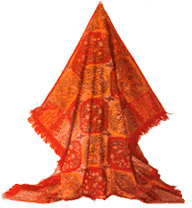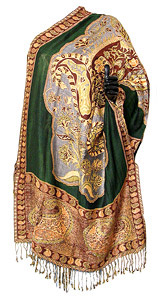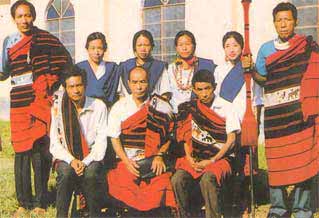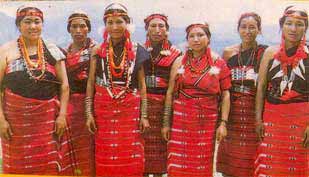Mr. N.K.Assumi send a beautiful gift to me .
Thanks Mr. N.K.Assumi for the gift .
Sarvesh Kumar Sharma Advocate (Advocacy) 20 October 2009
Mr. N.K.Assumi send a beautiful gift to me .
Thanks Mr. N.K.Assumi for the gift .
K.C.Suresh (Advocate) 21 October 2009
2day also i verified whetehr iam in 30 to get assumi's wonderful gift. its not the quality or quantity it is the friendship we love. Thanks assumi for such a beautiful stop. KC
K.C.Suresh (Advocate) 21 October 2009
read as step not stop KC
Y V Vishweshwar Rao (Advocate ) 21 October 2009
Than K You Very much Dear Assumi ,
I have recieved your beatiful gift , it is hear touching !
I am very happy that through LCI I have a good friend at disatance place with in India and he is by profession Advocate and having much concenr about me and all other advocates !
Thank you once again !
Y V Vishweshwar Rao - Advocate Warangal AP
Shree. ( Advocate.) 21 October 2009
My dear Assumi Sir,
I too received your pulchritudinous gift today!!!!
Thank you for the lovely gift,The gift is great, but even more,It’s your thoughtfulness I treasure.....Thanks for your kindness and friendship.
Prakash Yedhula (Lawyer) 21 October 2009
Dear Friend Assumi,
It is really a pleasant surprise to receive your gift today. Many members may not know what the surprise gift is all about. It is the great "NAGA SHAWL".
What is Naga Shawl is all about? Here is what we find in Wikipedia,
"Naga shawls are traditional shawls with a distinctive pattern (primarily in red and black wool) made by various Naga tribes from Nagaland"
"There are efforts underway now to recognise this type of textile material with a Geographical indication"

Naga Shawls are the hand woven traditional black, red and white combination shawls used by the tribes of Nagaland. It symbolizes a specific tribe and the wearer’s status in the society. Each Naga tribe has its own signature shawl. These beautiful shawls are the sole product of the Naga women’s creativity and wisdom. The threads are taken from the barks of plants that come up during the monsoon season. It is pried apart and then dried, boiled with ash, stretched, dyed and rolled on spindles before the actual weaving.
Thanks Dear! This gift is priceless and shall remain with me for the rest of my life.
Prakash
AEJAZ AHMED (Legal Consultant/Lawyer) 21 October 2009
Naga Shawl



Jithendra.H.J (Lawyer) 21 October 2009
Shree. ( Advocate.) 21 October 2009
Dear all,
The most prominent item of Naga dress is the shawl. It is different for every tribe and besides, there are varieties and sub-varieties in every group. A warrior's shawl or shawl of a man who has performed the Feast of Merit, is different from that of an ordinary villsager. The Ao warrior shawl called the Tsungkotepsu with figures of mithun, tiger, elephant, human head, cock, Dao and spear is strikingly picturesque. Each of these figures is symbolic; mithun representswealth of the wearer, the elephant and tiger denote his prowess in hunting and the human head signifies success in taking heads. These patterns are painted in black on a white band, while the cloth itself is of dark blue colour. Among the Changs, the unmarried boys and girls wear the Kaksi nei, while the newly married couple sport the Silang nei. Another variety of Chang shawl, the Tobu nei has zig-zag patterns in alternate red and black on a blue band. The popular Yimchunger shawls are the Aneak khim which is black, and Mokhok khim which is white. Rongkhim, a particularly attractive variety of Yimchunger shawl, may be worn only by one who has taken heads in war, it has prominent rectangular red design, red colour signifying the blood of the enemy. In the past it was possible to identify, by simply looking at the shawl of the wearer, the tribe he belonged to and occasionally even the group of villages he came from, his social status and the number of gennas he had performed. But nowadays this identification is not possible. Apart from the shawl, the normal working dress is a kilt which is generally of black colour. It may be embroidered with cowries in which case it is looked upon as a distinctly male dress. The cowries are rubbed on stone before being embroidered so that they may stick well, and they are always sewn by the man using the cloth and never by his wife or anybody else. The cowrie decoration is quite popular among the Nagas and it imparts to the kilt the character of toga virility, signifying his success in love or war. Source:https://www.webindia123.com/nagaland/People/dresornam.htm
 The common pattern among the Angamis is red and yellow (now being replaced by green) bands, on black cloth called Lohe. The western Angami villages have their own distinctive pattern. Lothas have a streamlined gradation of shawls indicating the number of gennas performed by the wearer. Thus a man who has performed the first genna wears the phangrhup, its strips being widened, after the second genna. The third genna entitles the man to wear the Ethasu, while after the series of feasts is completed and the stone-dragging done the man can wear the Lungpensu, which is a dark blue cloth with five stripes of light blue and with narrow marginal stripes on each side.
The common pattern among the Angamis is red and yellow (now being replaced by green) bands, on black cloth called Lohe. The western Angami villages have their own distinctive pattern. Lothas have a streamlined gradation of shawls indicating the number of gennas performed by the wearer. Thus a man who has performed the first genna wears the phangrhup, its strips being widened, after the second genna. The third genna entitles the man to wear the Ethasu, while after the series of feasts is completed and the stone-dragging done the man can wear the Lungpensu, which is a dark blue cloth with five stripes of light blue and with narrow marginal stripes on each side.
Members can view the preparation of Naga shawl in the below Youtube video.
https://www.youtube.com/watch?v=ZMw1iFT8Wfc
Prakash Yedhula (Lawyer) 21 October 2009
Dear friends,
I just highlighted about the Naga Shawl to show the valuable gift chosen by Assumi. However, seems this has diverted the main discussion, which is to thank our friend Assumi. Hence I would request members to honour the donor instead.
Prakash
AEJAZ AHMED (Legal Consultant/Lawyer) 21 October 2009
Dear Mr. Prakash & Sarvesh K Sharma
Actually it is a thread to post 'Thank' to Mr. Assumi. But due to my posting the same is going in a wrong way; Extremely Sorry for my above posting.
G. ARAVINTHAN (Legal Consultant / Solicitor) 22 October 2009
Thanks Assumi sir.. Nice gift sir.. All in my family said it as a wonderful gift. Thaks once again sir. Naga Shawl is a valuable gift and the de3tails were states by our members. thanks once again. I have a friendly hand from the North East States ...
Swami Sadashiva Brahmendra Sar (Nil) 23 October 2009
Just now, I have recieved the beautiful gift !
It makes a feeling as if a loved one from Nagaland has came to me !!!
Mr Asumi has started a noble tradition !!!
A lot of thanks to Mr Asumi !
K.C.Suresh (Advocate) 24 October 2009
Dear Assumi
Yesterday was the day of happiness. My never seen, unknown friend from Nagaland send me a gift, the most ever beautiful one with cultural heritage. I took that in my hand like a barby, and I saw my friend in my expecttion on that gift. This is real love and affection. My dear friend what else you can give to me - Your heart and soul is now with me and with 3o of us. Thank you I hope administarion will arrange a meeting of atleast the 30 of us. Thank you Assumi. With love and affection KC Suresh
N.K.Assumi (Advocate) 24 October 2009
Dear All, the gift is to mark the Friendships of the forum and to show my gratitude to all the members of the forum in making the Lawyers Club of India a "Knowledge society" one of the main objectives of the UNESCO, and also making the indian Judiciary a Transparent Judiciary.
